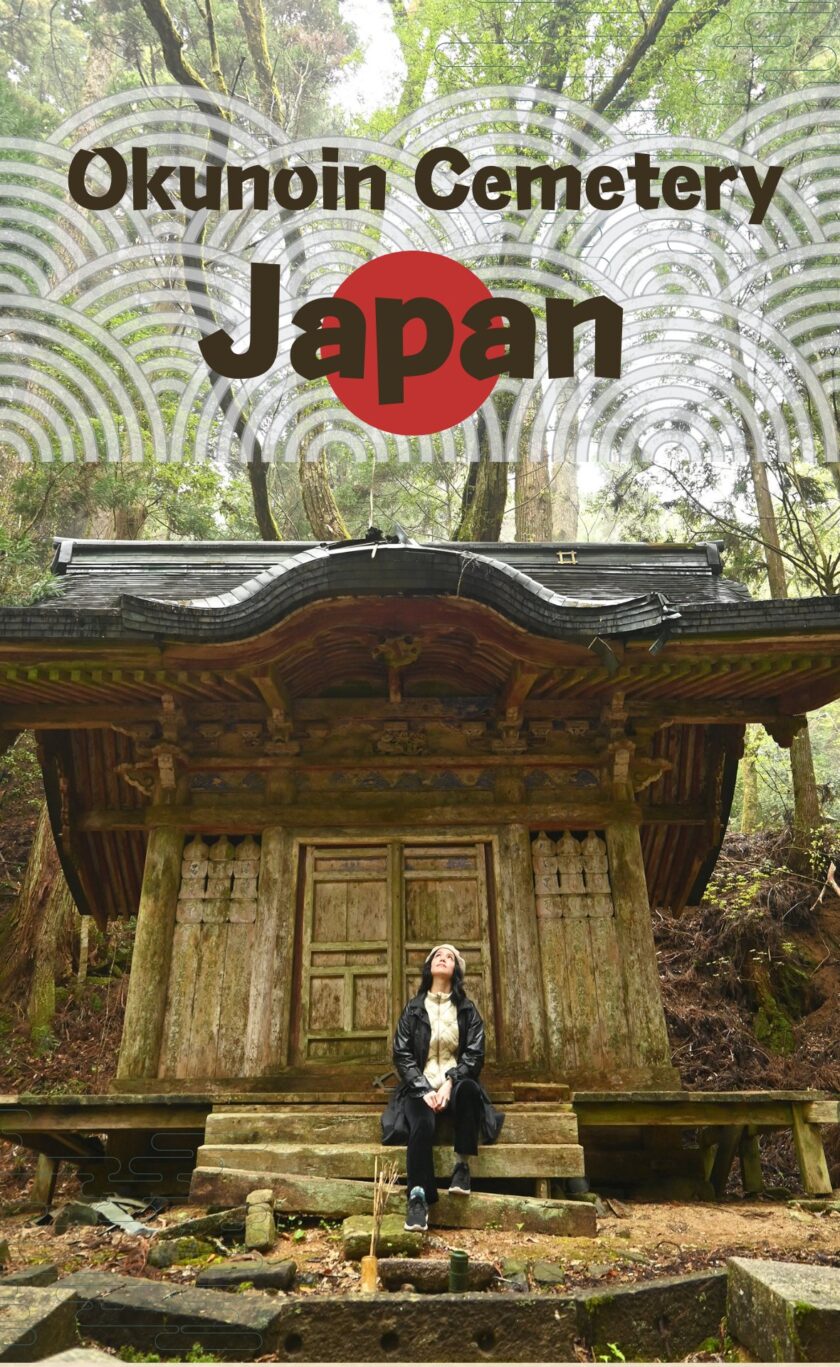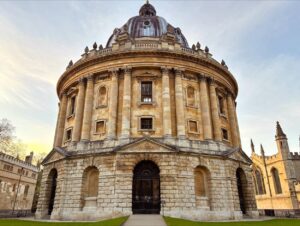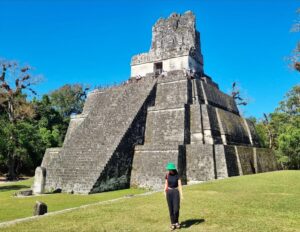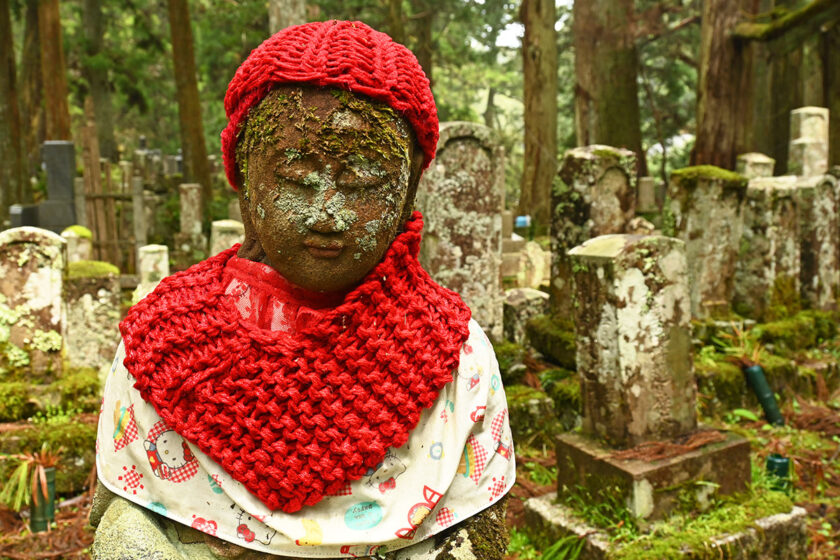
In the heart of the mystical Mount Koya, veiled in ancient cedar trees and draped in ethereal mist, lies a sanctuary of spirituality and historical resonance – Okunoin Cemetery.
This sacred enclave, home to the Mausoleum of Kobo Daishi, the founder of Shingon Buddhism, invites visitors on a mesmerising journey that transcends time and mortal confines.
Mount Koya is the birthplace of Shingon Buddhism in Japan over 1,200 years ago and is widely regarded as one of the most sacred places in the country.
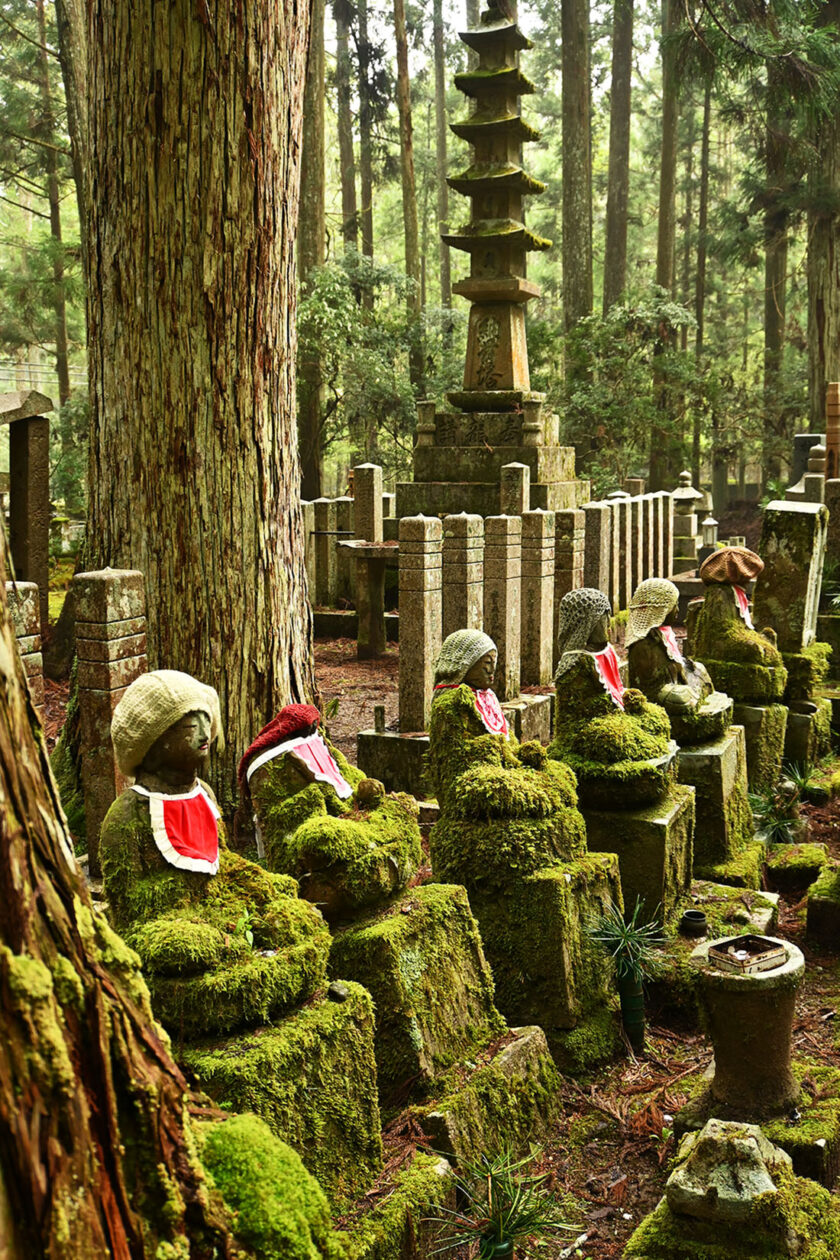
The largest cemetery in Japan
Okunoin Cemetery alone is worth the trip to Mount Koya (Koyasan) in Wakayama. There’s truly no place like it on earth.
It’s difficult to encapsulate this place in words, and while it’s often first described as the largest cemetery in the whole of Japan, it’s so much more than its impressive size. It can perhaps be best described as a living and breathing museum dedicated to ‘waiting’ souls.
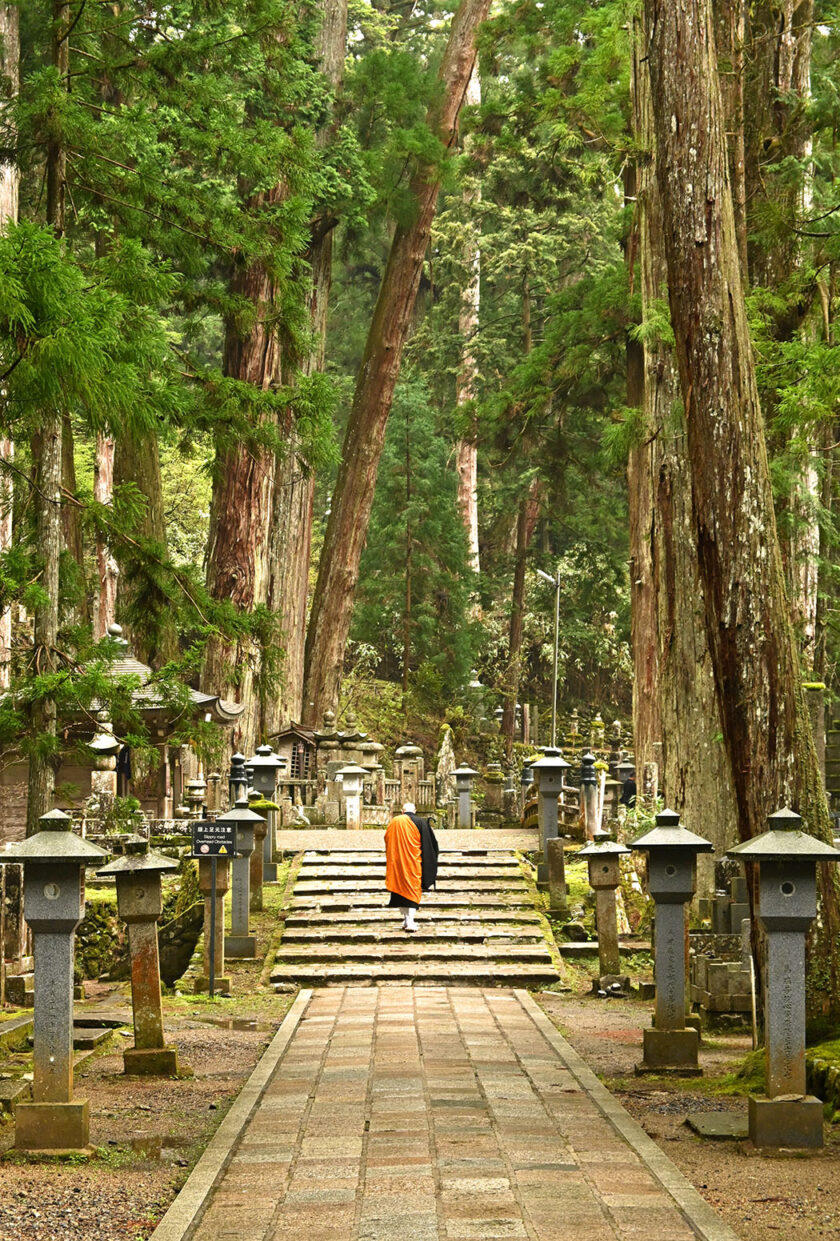
Waiting in eternal meditation
The beliefs of Shingon Buddhism are fascinating when it comes to death. Unlike traditional cemeteries in the West, those laid to rest at Okunoin are not dead, but rather waiting spirits.
Its founder, Kobo Daishi, is believed to rest at Okunion in eternal meditation waiting for the advent of Miroku, the Buddha of the Future. When this happens, Kobo Dashi will rise up to meet the Buddha of the Future and so too will all those resting in the cemetery.
For that and other reasons, since the cemetery’s founding in the 9th century, many adherents of the Shingon faith (and others – anyone can be buried at Okunoin) have wanted to be buried on the mountain.
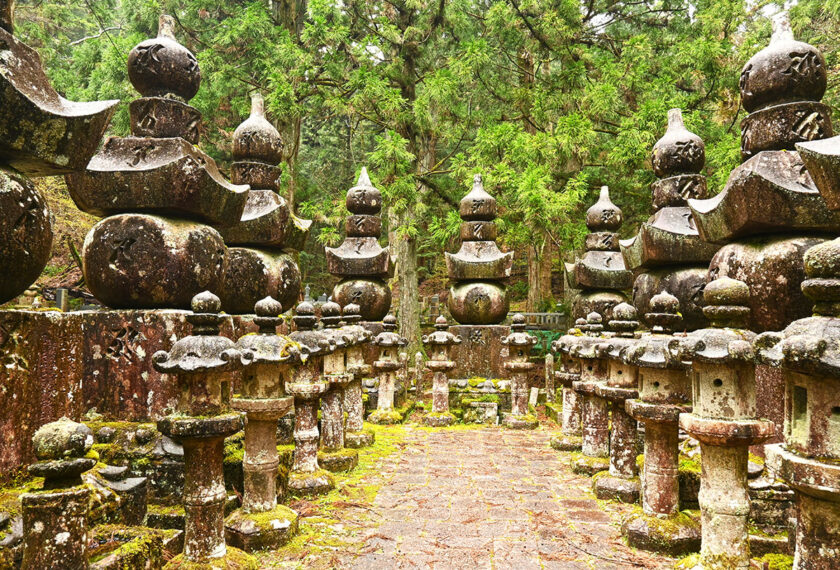
Exploring Okunoin Cemetery
As soon as you enter Okunoin Cemetery, marked by the Ichinohashi Bridge, it is like entering a dreamscape of sorts, the meeting point between the physical life and the eternal world.
Okunoin unveils itself beneath a stone path flanked at both sides by towering ancient cedar trees. Among the trees a vast tapestry of moss-ladened tombstones and monuments, that first appear like stone sculptures, populate the entirety of the cemetery for as far as the eye can see.
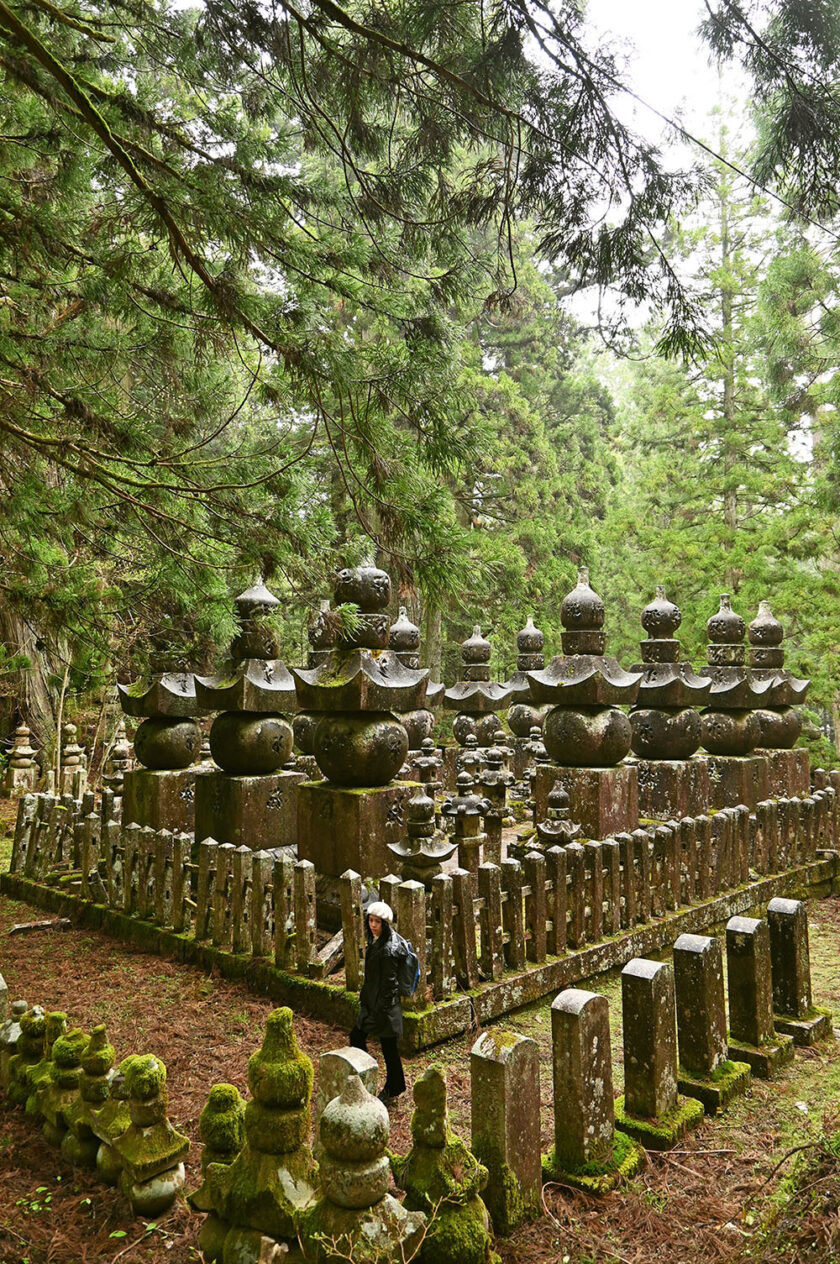
More than 200,000 grave stones, from military commanders to common folk are planted in lines between trees and attest to the faith in Koyasan. Each grave has one or more Gorinto, five-story pagodas consisting of five pieces representing earth, water, fire, wind and space.
In addition, quirky Jizo statues crop up between graves and the undergrowth of trees, their benevolent face watching over the sacred journey. Adorned with bibs and knitted hats, they stand as guardians of babies and children in traditional Japanese Buddhist teachings, bringing comfort to grieving parents and family members.
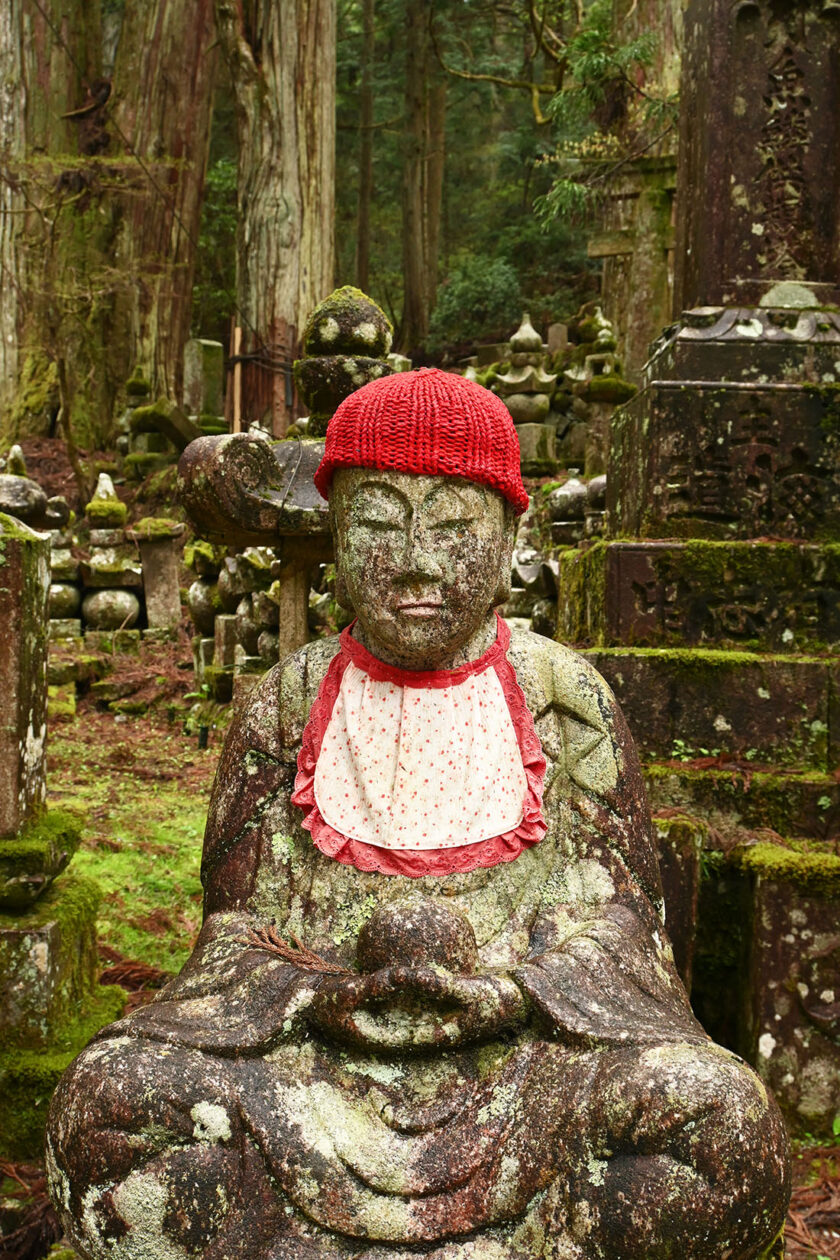
I’d never experienced or seen something so different, so enchanting, and so ethereal on such scale before. The ancient moss-covered tombstones and monuments, the ruined mausoleums, and the tree roots sprouting from the ground appeared like a forgotten land from a fantasy book.
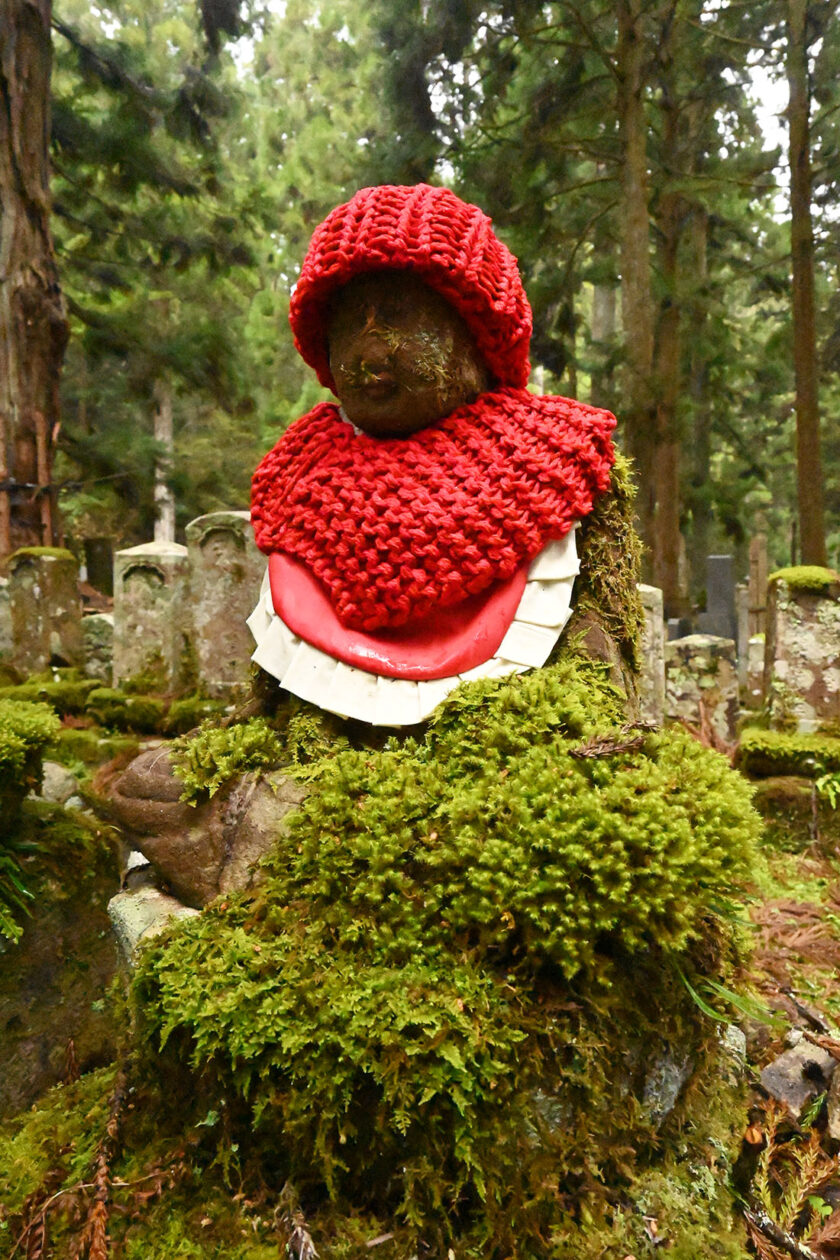
I could easily have spent the whole day exploring the sprawling cemetery, soaking in every detail and meandering through the eerily peaceful pathways, but I made my way down to Torodo Hall.
Torodo Hall (Lantern Temple)
The 2km cemetery path draws to a culmination at Torodo Hall, the cemetery’s main place of worship and where the mausoleum of Kobo Daishi is located.
Before reaching the hall, you cross over Gobyo Bridge. Nearby are a row of statues known as Mizumuke Jizo (Water Covered Jizo) where visitors throw water at the statues using a wooden ladle. An unusual ritual (for me) to see in a cemetery, but I discover it’s carried out in prayer for departed family members.
People from all over the world come to pay their respects and see the wonder of Torado Hall, where the votive lanterns are said to have burned in this hall uninterrupted for thousands of years, reflecting the notion that life is a continuum.
Pilgrims, carrying wooden prayer sticks, express their reverence, weaving aspirations and hopes into the sacred tapestry that enfolds Okunoin. As it began to rain, it awoke a fragranced intensity in which the incense infused with the cedar trees, making the place feel truly awake with sleeping souls.
The unusual sight of company burials...
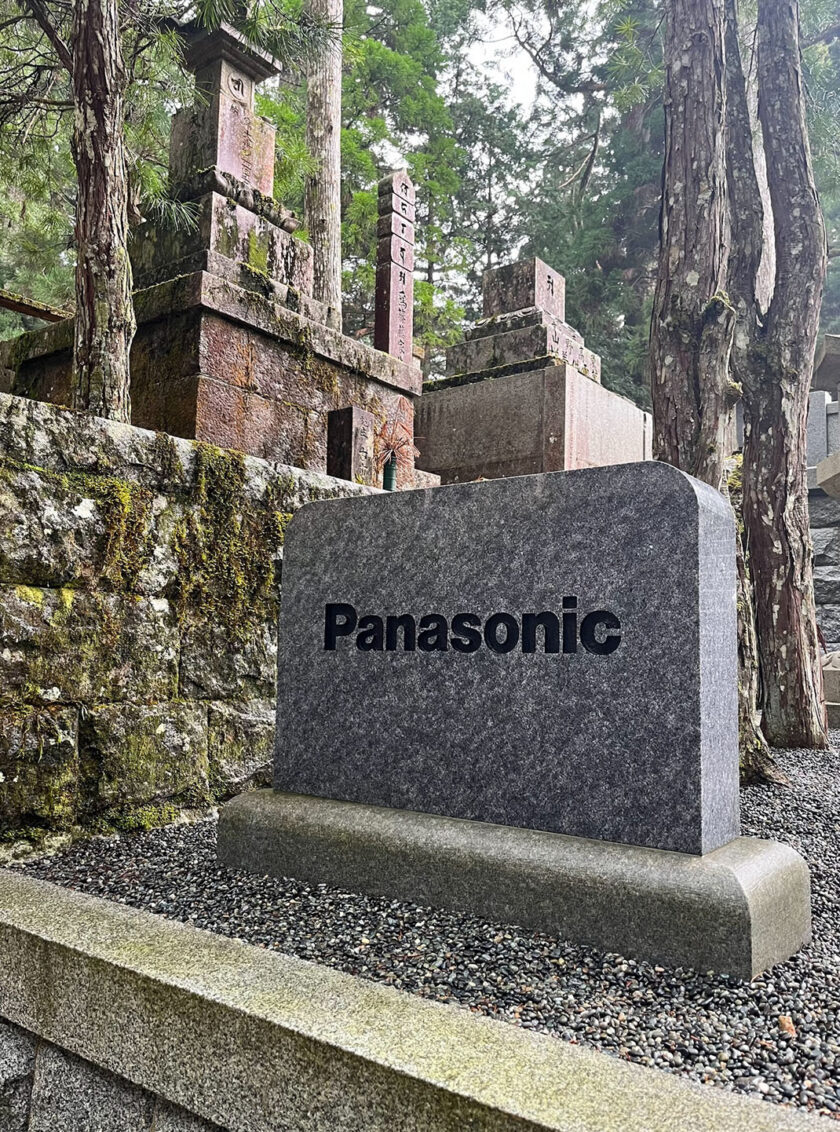
A journey through Okunoin Cemetery offers an experience like a no other. It delves into the religious practises of Shingon, sacred traditions, and ancient folklore. However, there was one sight that did cause me to raise my eye-brow….
As I wandered down many of the winding paths and inner sections, I stumbled across a modern monument that read ‘Panasonic’ in big letters, not far away another one read ‘Nissan’.
Curious, I took a closer look. If there was a time I wish I could read Japanese, it was certainly now.
I couldn’t quite work out whether this meant that employees of the company were waiting in rest together, or whether it served as more of a symbolic monument to honour employees who had worked at Panasonic.
The first reason feels kind of dystopian to me, so I hope it’s more of a symbolic gesture…
Humorously, however, there’s even a tomb erected by a termite company on behalf of the insects it kills in the course of business. Sadly I didn’t manage to find this grave site myself, so I’d love to return to Okunoin Cemetery, and possibly with a guide. I know I only scratched the surface during my visit to this truly fascinating and unforgettable place.
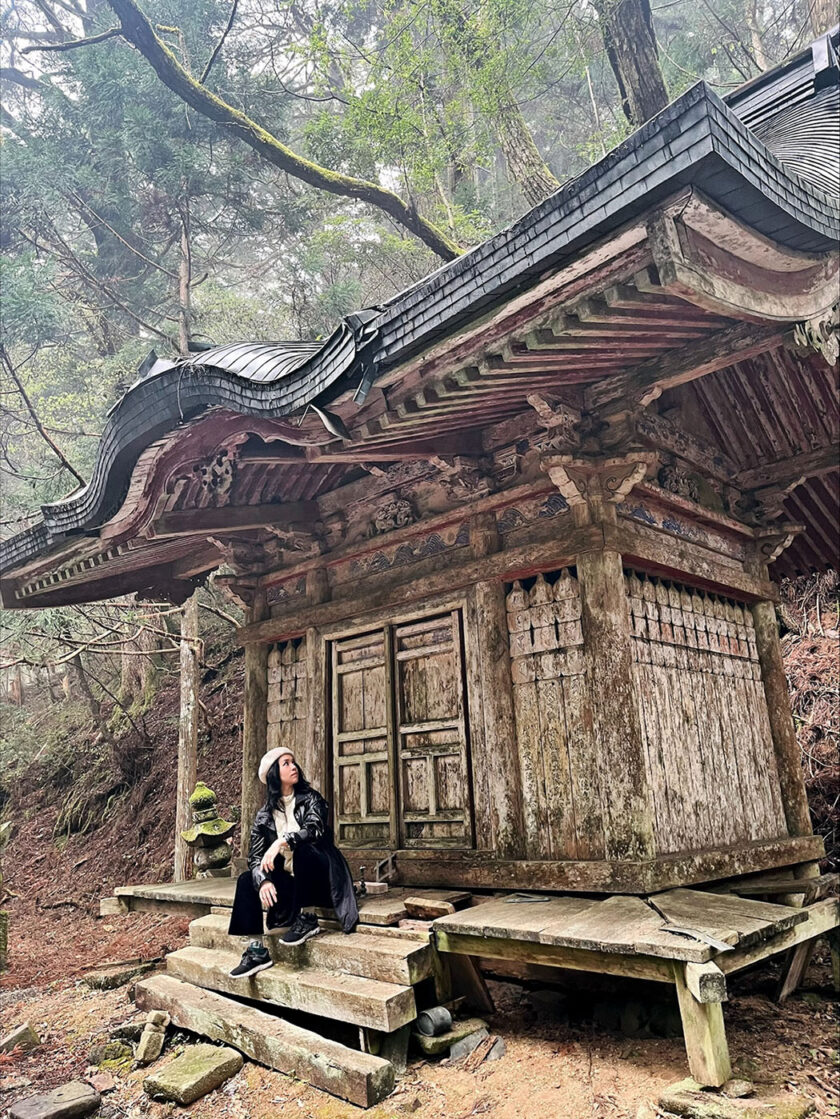
How to get to Mount Koya
The most direct way to get to Koya-san is from Osaka’s Namba or Shin-Imamiya stations.
From either or these stations, take the express train using the Nankai Koya line to Gokurakubashi station. The trip takes approximately 80 minutes on the express train, though if you miss one of the five that depart daily, don’t worry, the regular train departs frequently and only takes 10 minutes longer.
Once you reach Gokurakubashi station, you then have to take a quick cable car to reach Koya-san station. This is actually one of the most exciting parts of the journey, as you head above the trees alongside the mountain to reach your final destination.
